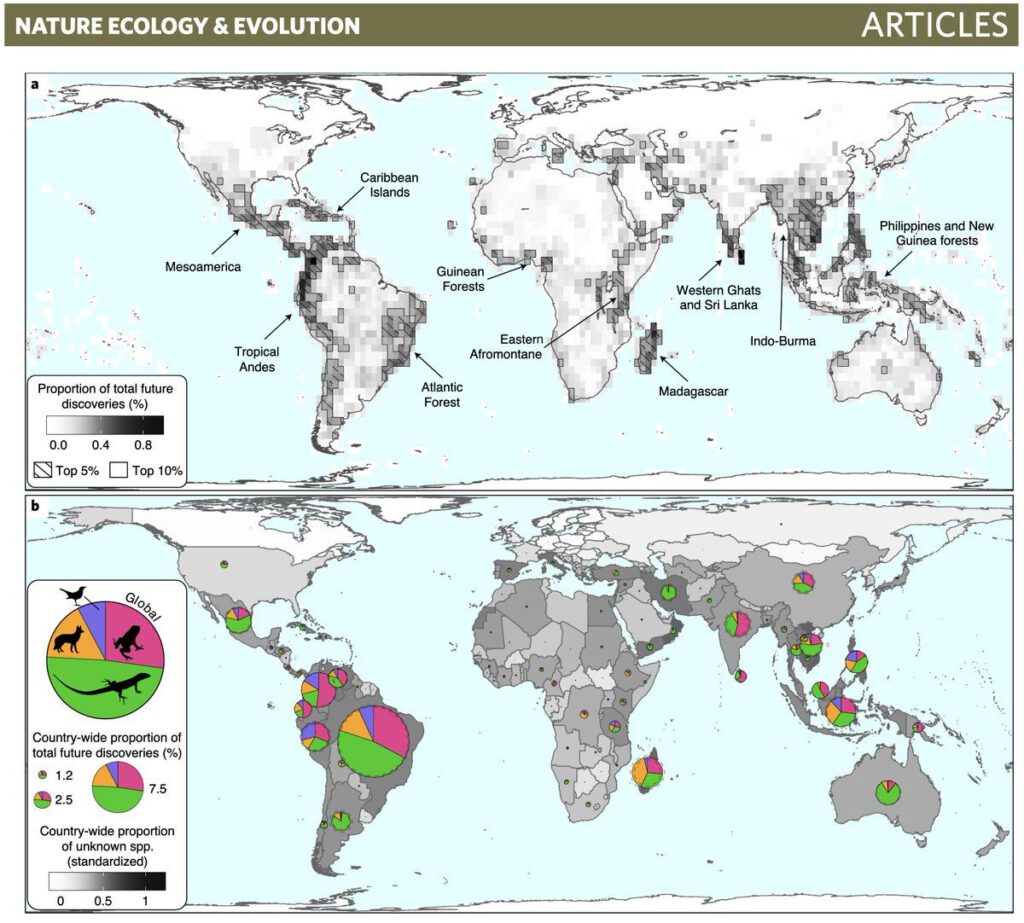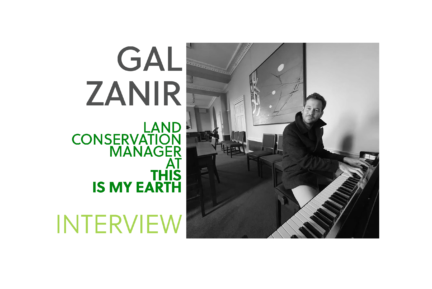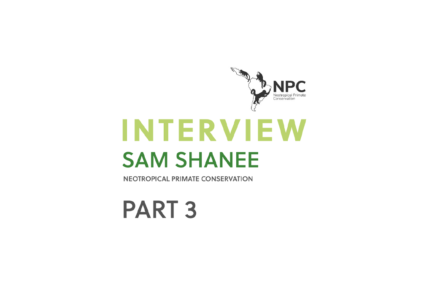New map shows where the 80% of species we don’t know about may be hiding in the very interesting study “Shortfalls and opportunities in terrestrial vertebrate species”

Among the findings, researchers Mario Moura and Walter Jetz reported that a newly described chameleon from Madagascar is the world’s tiniest chameleon, and possibly the smallest reptile. Many chameleons are only found in tiny patches of forest threatened by deforestation.© Nature Ecology & Evolution
Conservative estimates suggests only 13-18% of all living species may be known at this point, although this number could be as low as 1,5%. According to the authors, reptiles “constitute the greatest portion” of new species not yet discovered, and new kinds of reptiles are expected to be found in more arid regions such as Australia, Iran and Argentina.
After centuries of efforts by #biodiversity explorers and taxonomists, the catalogue of life still has too many blank pages, and this fact actually seems to be a danger. According to researchers, discovery gaps hinder the safeguarding and realization of #biodiversity.
As for the newly described chameleon is not just micro in size — it is also micro endemic. It only occupies a narrow band of degraded rainforest on the Sorata massif in northern Madagascar. Unlike many of its tiny cousins that inhabit lowland forests, it is found in jungles lying 1,300 meters (4,300 feet) above sea level. “An arc of deforestation is creeping up on its habitat”, the authors wrote in the paper. In the absence of other fuel sources, Malagasy people depend heavily on wood for everything from cooking to heating to construction.
In her article published at the magazine Mongabay “Newly described chameleon from Madagascar may be world’s smallest reptile” Malavika Vyawahare highlights the fact that Madagascar hosts + than 100 species of chameleons, and 30 species belonging to Brookesia genus alone.
At 🌿TiME • This is My Earth we have preserved half dozen lands which were considered #biodiversity hotspots by our scientific advisory board.
References





























































































